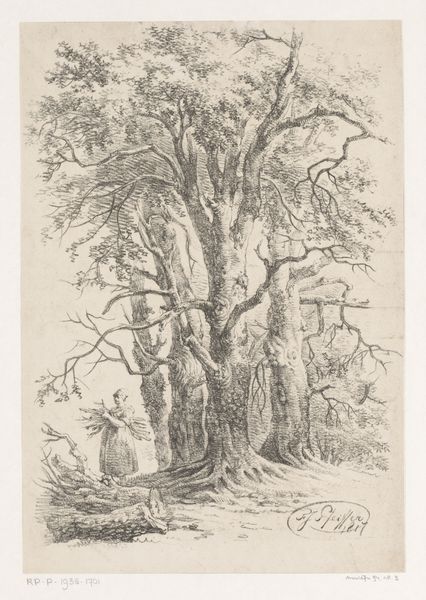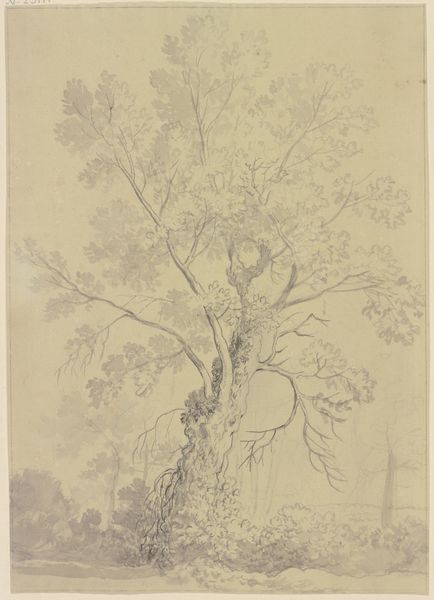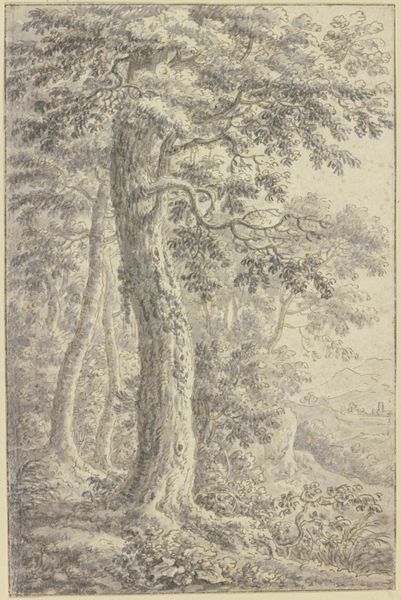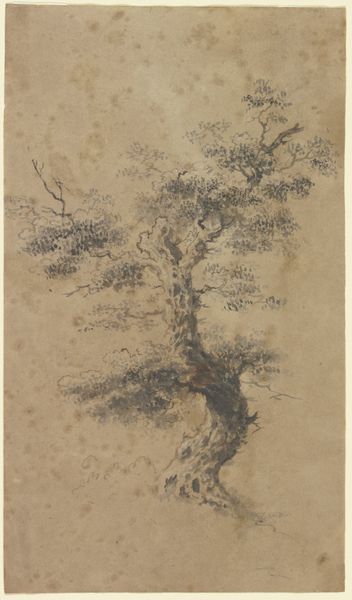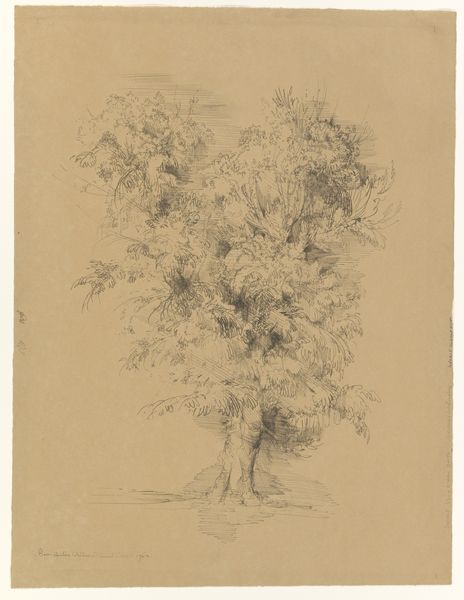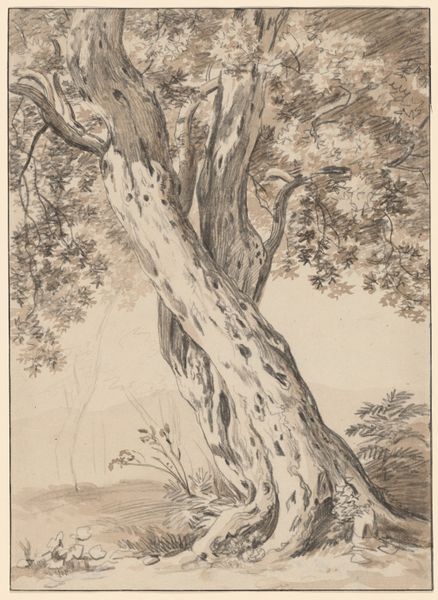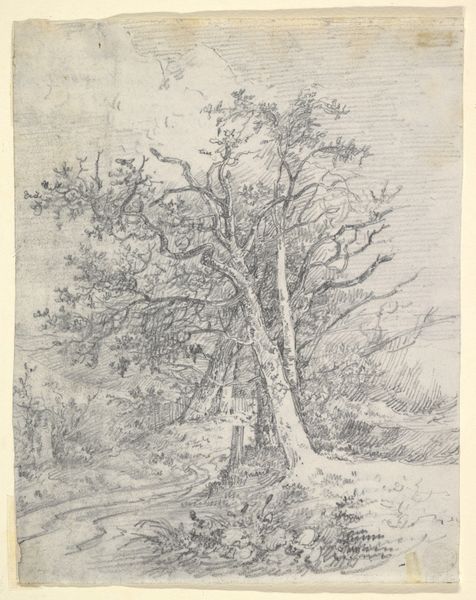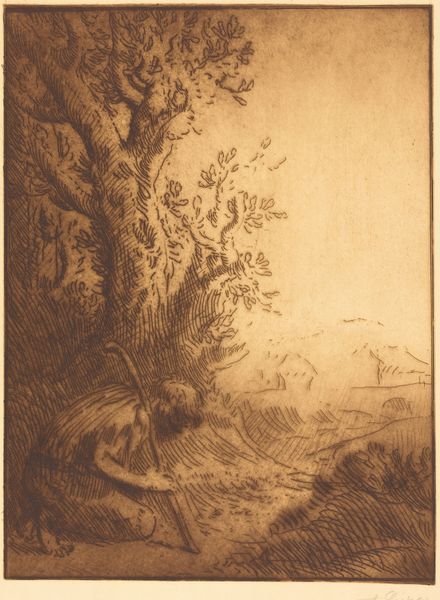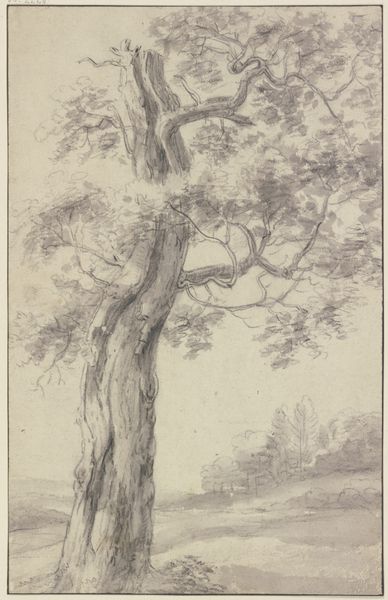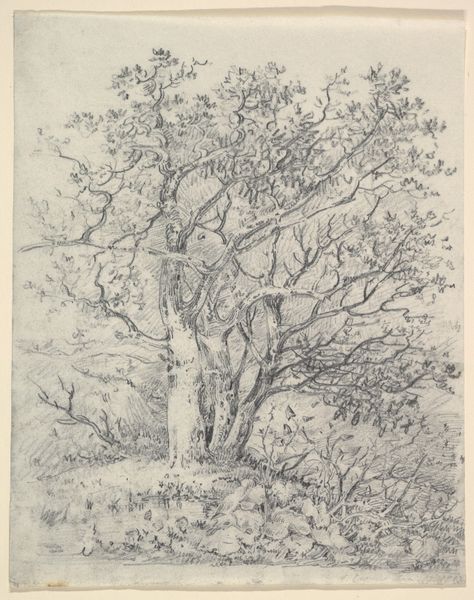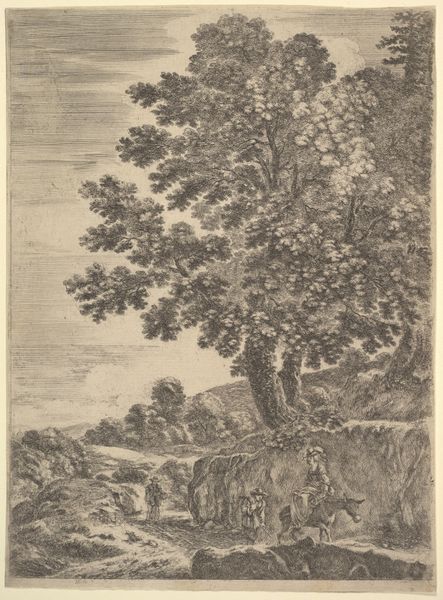
Dimensions: overall: 41.9 x 28.1 cm (16 1/2 x 11 1/16 in.)
Copyright: National Gallery of Art: CC0 1.0
Curator: Here we have Johann Caspar Huber’s "A Leafy Oak by a Woodland Path," a pencil drawing from around the 1780s. Editor: It feels melancholic. The starkness of the pencil emphasizes the tree's looming presence. It's all texture, light, and shadow. Curator: Precisely. Look how the artist uses subtle gradations of shading to define form and volume. The composition emphasizes the structural integrity of the oak, its branches reaching skyward, conveying both strength and fragility. Editor: I’m thinking about the physicality of it – Huber's choice of pencil, its source, how it was manufactured, and who had access to these materials at the time. This wasn’t a cheap sketching expedition; resources were involved, and societal power dynamics would be at play regarding materials and access. Curator: An interesting perspective. Although, I'm more focused on the pictorial space itself. Notice how Huber creates depth using atmospheric perspective; the background fades into a hazy distance, which focuses the viewer's attention on the details of the majestic oak. Editor: But those artistic decisions serve to place us within a specific class framework. A romanticized nature view hides any indication of industry and land use during the time of its making. Were the peasants able to meander along the woodland path, taking in this view, or was it designed as leisure only available to landed gentry? Curator: Perhaps. Still, if we analyze the composition from a purely formal perspective, the tree acts as a vertical anchor around which all the other elements revolve. The diagonals of the path lead our eye toward it, making the whole scene revolve around this single symbol. Editor: I'm still thinking about the ground material here. All this underbrush and foliage; how long did this piece take to make, and what position would Huber hold? What was it like working in natural conditions, what might be his labor and relationship to production as he conceived the landscape we observe? Curator: The drawing exemplifies the picturesque aesthetic so prized during the Romantic era. Huber masterfully captures the sublime grandeur of nature. I can certainly see his place within artistic movements throughout history. Editor: And it challenges me to consider art's role not just in aesthetics, but within society itself, who gets access, and how they utilize or relate to natural resources, be it landscapes or pencils themselves. Curator: Well, considering Huber's skill in line, shading, and form, this artwork provides much to analyze within those terms.
Comments
No comments
Be the first to comment and join the conversation on the ultimate creative platform.
